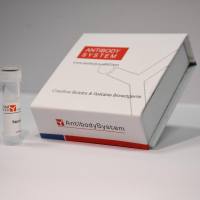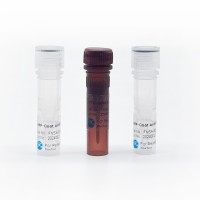From In Vitro to In Vivo: Imaging from the Single Cell to the Whole Organism
互联网
- Abstract
- Table of Contents
- Materials
- Figures
- Literature Cited
Abstract
This unit addresses the applications of fluorescence microscopy and quantitative imaging to study multiple physiological variables of living tissue. Protocols are presented for fluorescence?based investigations ranging from in vitro cell and tissue approaches to in vivo imaging of intact organs. These include the measurement of cytosolic parameters both in vitro and in vivo (such as calcium, pH, and nitric oxide), dynamic cellular processes (renin granule exocytosis), FRET?based real?time assays of enzymatic activity (renin), physiological processes (vascular contraction, membrane depolarization), and whole organ functional parameters (blood flow, glomerular filtration). Multi?photon microscopy is ideal for minimally invasive and undisruptive deep optical sectioning of the living tissue, which translates into ultra?sensitive real?time measurement of these parameters with high spatial and temporal resolution. With the combination of cell and tissue cultures, microperfusion techniques, and whole organ or animal models, fluorescence imaging provides unmatched versatility for biological and medical studies of the living organism. Curr. Protocol. Cytom. 44:12.12.1?12.12.26. © 2008 by John Wiley & Sons, Inc.
Keywords: in vivo imaging; in vitro imaging; multiphoton fluorescence microscopy; real?time imaging; intravital imaging; laser?scanning microscopy
Table of Contents
- Introduction
- Strategic Planning
- Fluorescence Studies of Cultured Cells: Cell Signaling Studies, Primary Culture, or Cell Lines
- Basic Protocol 1: Cuvette‐Based Spectrofluorometry to Assess Second‐Messenger Signaling in Living Cells
- Support Protocol 1: Enhanced Calcium Loading Techniques with Fura‐2 and Fluo‐4
- Basic Protocol 2: Cuvette‐Based Spectrofluorometry to Assess Nitric Oxide Production
- Basic Protocol 3: A Novel Application of FRET: Cuvette‐Based Spectrofluorometry to Evaluate Cellular Enzyme Activity
- Basic Protocol 4: In Vitro Tissue Imaging of Renin Release: Isolated Microperfused Tissue, JGA, Renal Medulla
- Basic Protocol 5: Quantitative Imaging of Kidney Functions In Vivo by Multiphoton Excitation Laser Scanning Fluorescence Microscopy
- Basic Protocol 6: In Vivo Imaging of Cytosolic Parameters (Ca2+, pH)
- Reagents and Solutions
- Commentary
- Literature Cited
- Figures
- Tables
Materials
Basic Protocol 1: Cuvette‐Based Spectrofluorometry to Assess Second‐Messenger Signaling in Living Cells
Materials
Support Protocol 1: Enhanced Calcium Loading Techniques with Fura‐2 and Fluo‐4
Materials
Basic Protocol 2: Cuvette‐Based Spectrofluorometry to Assess Nitric Oxide Production
Materials
Basic Protocol 3: A Novel Application of FRET: Cuvette‐Based Spectrofluorometry to Evaluate Cellular Enzyme Activity
Materials
Table 2.2.2 MaterialsFluorescent Probes Commonly Used in In Vitro Experiments
Basic Protocol 4: In Vitro Tissue Imaging of Renin Release: Isolated Microperfused Tissue, JGA, Renal Medulla
Materials
|
Figures
-
Figure 12.12.1 Fluorescence imaging of primary cultures and cell lines to study morphology and compartments. DIC (A ) and fluorescence (B ) images of primary vascular smooth muscle cells derived from manually dissected arteriolar explants. (C ) Quinacrine‐stained renin granules in As 4.1 cells, a renin‐secreting tumor cell line. (D ) Renal medullary interstitial cells in culture labeled with Nile‐Red staining of lipid vesicles. (E ) A mouse macula densa‐derived cell line is co‐labeled with Mito‐Tracker Red (mitochondria) and quinacrine (green, acidic granules). View Image -
Figure 12.12.2 Spectrofluorometry readings for ratiometric calcium signaling (A ) and a renin‐FRET enzymatic activity assay (B ). (A ) Representative recording and procedure of calibrating fura‐2 fluorescence into absolute values of [Ca2+ ]. The emission spectrum collected from 380 nm excitation (gray) and the intracellular calcium ratio (black) are used to calculate absolute concentrations according to the equation described in the methods. (B ) The increase in slope shown across the time duration of the arrow (initial rate) corresponds to an increase in EDANS fluorescence (ANG I production) due to cleavage of the substrate from renin enzymatic activity. View Image -
Figure 12.12.3 Imaging in vitro preparations microdissected from mouse kidney. (A ) A transmitted light differential interference contrast (DIC) image demonstrating the afferent arteriole (AA) and attached glomerulus (G). (B ) Fluorescence image of an AA‐G preparation. Renin granules (green) are labeled with quinacrine, and plasma membrane (red) is labeled with R18. (C ) Fluorescence image of a glomerulus using the nuclear stain DAPI (blue) and the membrane‐stain TMA‐DPH to label the podocytes found surrounding glomerular endothelial cells. (D ) DIC image of a glomerulus with afferent arteriole (AA) and attached tubule segment (cTAL) for double perfusion studies. Fluorescence image with quinacrine‐stained renin granules (green) is superimposed. (E ) Pseudocolor image of an in vitro afferent arteriole‐glomerulus preparation stained with the Stark‐shift voltage sensitive dye, annine‐6, showing variations in membrane potential in individual vascular smooth muscle cells. View Image -
Figure 12.12.4 In vivo imaging and quantification of renal functional parameters in a Munich‐Wistar rat. Quinacrine (green) is used to label acidic compartments (including renin granules) and 70‐kDa rhodamine (red) marks plasma in the intravascular space. (A ) Various cortical segments of the nephron may be visualized by z‐sectioning down to 200 µm below the surface of the kidney. A glomerulus (G) opens up into the proximal tubule (PT), and a collecting duct (CD) lies adjacent. Multiple functional compartments may be visualized simultaneously, down to the subcellular level. (B ) The single nephron glomerular filtration rate (SNGFR) may be measured taking xy‐t video recordings and calculating the flow of Lucifer Yellow, an extracellular fluid marker, down the early portion of the PT. (C ) In vivo imaging of intracellular pH in the proximal tubule (PT). BCECF‐AM was loaded under the renal capsule in the living kidney to measure cell pH. Note the primarily apical, microvillar BCECF fluorescence in the PT indicating alkalotic conditions (bicarbonate reabsorption). View Image
Videos
Literature Cited
| Literature Cited | |
| Denk, W., Strickler, J. H., and Webb, W. W. 1990. Two‐photon laser scanning fluorescence microscopy. Science 248: 73‐76. | |
| Garaschuk, O., Milos, R.I., and Konnerth, A. 2006. Targeted bulk‐loading of fluorescent indicators for two‐photon brain imaging in vivo. Nat. Protoc. 1: 380‐386. | |
| Hwang, E. F., Williams, I., Kovacs, G., Peti‐Peterdi, J., Siroky, B., Rice, W. C., Bates, E., Schweibert, E.M., Unlap, M. T., and Bell, P.D. 2003. Impaired ability of the Na+/ Ca2+ exchanger from the Dahl/Rapp salt‐sensitive rat to regulate cytosolic calcium. Am. J. Physiol. Renal Physiol. 284: F1023‐F1031. | |
| Kang, J. J., Toma, I., Sipos, A., McCulloch, F., and Peti‐Peterdi, J. 2006a. Quantitative imaging of basic functions in renal (patho)physiology. Am. J. Physiol. Renal Physiol. 291(2): F495‐F502. | |
| Kang, J. J., Toma, I., Sipos, A., McCulloch, F., and Peti‐Peterdi, J. 2006b. Imaging the renin‐angiotensin system: An important target of anti‐hypertensive therapy. Adv. Drug Deliv. Rev. 58: 824‐833. | |
| Komlosi, P., Fintha, A., and Bell, P.D. 2006. Unraveling the relationship between macula densa cell volume and luminal solute concentration/osmolality. Kidney Int. 70: 865‐871. | |
| Kovacs, G., Komlosi, P., Fuson, A., Peti‐Peterdi, J., Rosivall, L., and Bell, P.D. 2003. Neuronal nitric oxide synthase: Its role and regulation in macula densa cells. J. Am. Soc. Nephrol. 14: 2475‐2483. | |
| McDonald, D.M. and Choyke, P. L. 2003. Imaging of angiogenesis: From microscope to clinic. Nat. Med. 9: 713‐725. | |
| Peti‐Peterdi, J. 2006. Calcium wave of tubuloglomerular feedback. Am. J. Physiol. Renal Physiol. 291: F473‐F480. | |
| Peti‐Peterdi, J. and Bell, P.D. 1999. Cytosolic [Ca2+] signaling pathway in macula densa cells. Am. J. Physiol. 277: F472‐F476. | |
| Peti‐Peterdi, J., Chambrey, R., Bebok, Z., Biemesderfer, D., St. John, P. L., Abrahamson, D.R., Warnock, D.G., and Bell, P.D. 2000. Macula densa Na(+)/H(+) exchange activities mediated by apical NHE2 and basolateral NHE4 isoforms. Am. J. Physiol. Renal Physiol. 278: F452‐F463. | |
| Peti‐Peterdi, J., Morishima, S., Bell, P.D., and Okada, Y. 2002a. Two‐photon excitation fluorescence imaging of the living juxtaglomerular apparatus. Am. J. Physiol. Renal Physiol. 283: F197‐F201. | |
| Peti‐Peterdi, J., Bebok, Z., Lapointe, J.Y., and Bell, P.D. 2002b. Novel regulation of cell [Na(+)] in macula densa cells: Apical Na(+) recycling by H‐K‐ATPase. Am. J. Physiol. Renal Physiol. 282: F324‐F329. | |
| Peti‐Peterdi, J., Komlosi, P., Fuson, A. L., Guan, Y., Schneider, A., Qi, Z., Redha, R., Rosivall, L., Breyer, M.D., and Bell, P.D. 2003. Luminal NaCl delivery regulates basolateral PGE2 release from macula densa cells. J. Clin. Invest. 112: 76‐82. | |
| Peti‐Peterdi, J., Fintha, A., Fuson, A. L., Tousson, A., and Chow, R. H. 2004. Real‐time imaging of renin release in vitro. Am. J. Physiol. Renal Physiol. 287: F329‐F335. | |
| Rosivall, L., Mirzahosseini, S., Toma, I., Sipos, A., and Peti‐Peterdi, J. 2006. Fluid flow in the juxtaglomerular interstitium visualized in vivo. Am. J. Physiol. Renal Physiol. 291: F1241‐F1247. | |
| Sipos, A., Toma, I., Kang, J. J., Rosivall, L., and Peti‐Peterdi, J. 2007. Advances in renal (patho)physiology using multiphoton microscopy. Kidney Int. 72: 1188‐1191. | |
| St. Croix, C.M., Leelavanichkul, K., and Watkins, S. C. 2006. Intravital fluorescence microscopy in pulmonary research. Adv. Drug Deliv. Rev. 58: 834‐840. | |
| Svoboda, K., Helmchen, F., Denk, W., and Tank, D. W. 1999. Spread of dendritic excitation in layer 2/3 pyramidal neurons in rat barrel cortex in vivo. Nat. Neurosci. 2: 65‐73. | |
| Toma, I., Kang, J. J., and Peti‐Peterdi, J. 2006. Imaging renin content and release in the living kidney. Nephron. Physiol. 103: 71‐74. | |
| Wang, G. T., Chung, C. C., Holzman, T. F., and Krafft, G. A. 1993. A continuous fluorescence assay of renin activity. Anal. Biochem. 210: 351‐359. | |
| Wang, W., Wyckoff, J.B., Frohlich, V. C., Oleynikov, Y., Hüttelmaier, S., Zavadil, J., Cermak, L., Bottinger, E.P., Singer, R. H., White, J.G., Segall, J.E., and Condeelis, J. S. 2002. Single cell behavior in metastatic primary mammary tumors correlated with gene expression patterns revealed by molecular profiling. Cancer Res. 62: 6278‐6288. | |
| Yu, W., Sandoval, R.M., and Molitoris, B. A. 2005. Quantitative intravital microscopy using a Generalized Polarity concept for kidney studies. Am. J. Physiol. Cell Physiol. 289: C1197‐C1208. | |
| Yuste, R. and Denk, W. 1995. Dendritic spines as basic functional units of neuronal integration. Nature. 375: 682‐684. | |
| Zsembery, A., Boyce, A. T., Liang, L., Peti‐Peterdi, J., Bell, P.D., and Schwiebert, E.M. 2003. Sustained calcium entry through P2′ nucleotide receptor channels in human airway epithelial cells. J. Biol. Chem. 278: 13398‐13408. |









